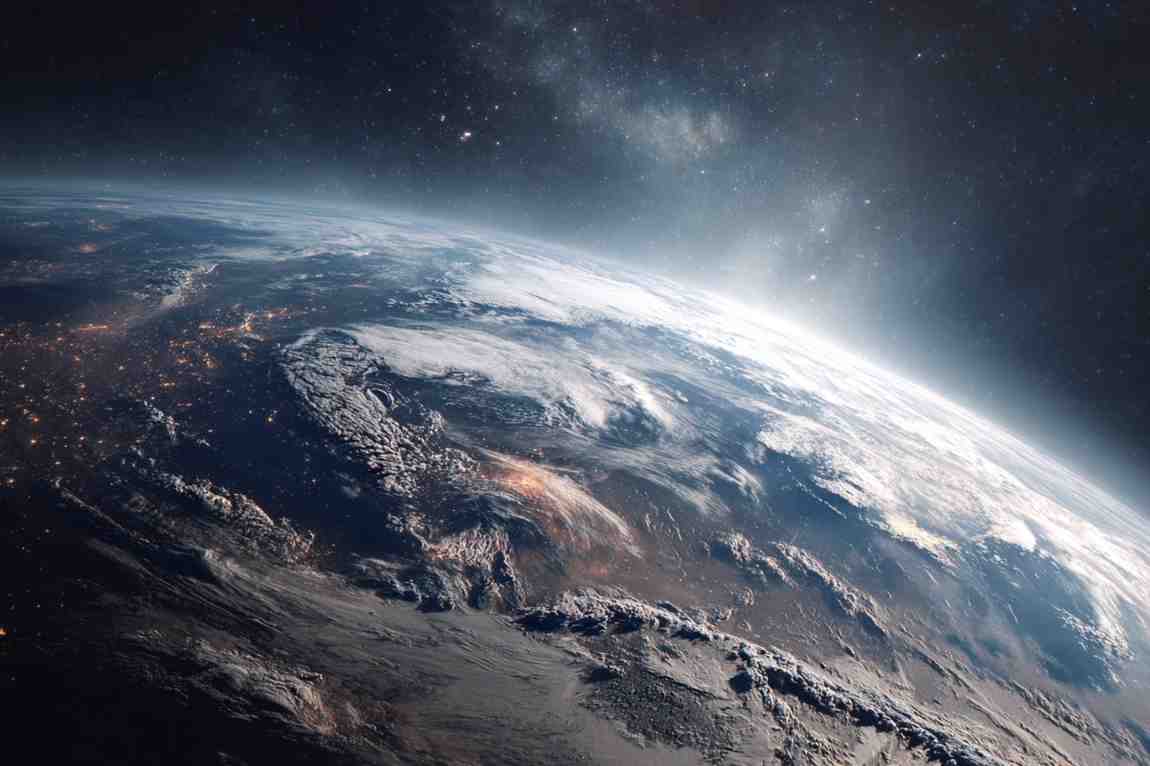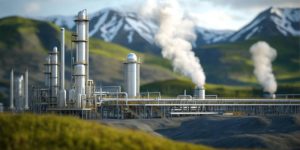How much CO₂ really affects global warming: human influence versus natural forces

The belief that carbon dioxide (CO₂) is the dominant driver of global warming has become a foundational claim in modern climate policy and public discourse. However, the reality is more nuanced. Climate is a dynamic and complex system affected by a wide range of natural and human factors. While there is broad agreement that CO₂ contributes to the greenhouse effect, the extent to which human activity drives recent warming remains a subject of scientific debate. Natural factors such as volcanic activity, solar variation, ocean cycles, and feedback mechanisms all play roles in influencing the Earth’s temperature, and their impact is often underrepresented in public narratives.
What is the role of CO₂ in global warming, the proportion attributed to human activity, and how do other natural forces compare? Climate models are characterized by a selective interpretation of historical data, and climate policy is too narrowly focused on anthropogenic emissions while ignoring broader systemic causes.
What role does CO₂ play in the greenhouse effect?
Carbon dioxide is one of several greenhouse gases that trap infrared radiation emitted by the Earth’s surface, preventing it from escaping into space. This process keeps the planet warmer than it would be otherwise and is essential to sustaining life. However, CO₂ is not the most potent or abundant greenhouse gas. Water vapor is responsible for the majority of the greenhouse effect, up to 90 percent, depending on the model and region (The Role of Water Vapor in Earth’s Climate, Held & Soden). CO₂ contributes only a small fraction, with estimates ranging from 4 to 20 percent depending on the context.
Moreover, the greenhouse effect of CO₂ is logarithmic, not linear. This means that as more CO₂ is added to the atmosphere, its warming effect diminishes incrementally. For example, the first 100 parts per million (ppm) of CO₂ have a much greater effect than the increase from 400 to 500 ppm (The Saturated Greenhouse Effect Theory, Happer).
Human contribution to atmospheric CO₂
It is undisputed that human activity has increased atmospheric CO₂ concentrations, primarily through the burning of fossil fuels, cement production, and deforestation. Since the Industrial Revolution, atmospheric CO₂ levels have risen from approximately 280 ppm to over 420 ppm today. The Intergovernmental Panel on Climate Change (IPCC) attributes most of the increase since 1950 to human activity (AR6 Synthesis Report, IPCC).
However, human CO₂ emissions are still relatively small in comparison to natural sources. Volcanic eruptions, plant respiration, ocean outgassing, and microbial activity all release CO₂ into the atmosphere. The total human contribution to global CO₂ flux is estimated at around 4 to 5 percent annually, while the remaining 95 percent is from natural sources (The Great Climate Debate, Moore).
What distinguishes anthropogenic CO₂, according to mainstream science, is that natural sinks such as oceans and forests are generally in equilibrium with natural sources, while human emissions add an extra load the system struggles to absorb fully. But this assumes that the natural carbon cycle is stable and constant, which is not always the case. Ocean cycles, changes in solar radiation, and ecosystem shifts can alter CO₂ absorption and release significantly.
The climate’s sensitivity to CO₂
Climate sensitivity refers to the temperature increase expected from a doubling of atmospheric CO₂. Early models used by the IPCC estimated a range between 1.5°C and 4.5°C. However, recent studies using empirical data suggest that climate sensitivity may be at the lower end of that range, or even below it (Reassessing Climate Sensitivity Using Empirical Methods, Lewis & Curry).
Some observational studies have placed the likely sensitivity around 1.2°C, which would imply a relatively modest warming effect from human CO₂ emissions. Critics argue that models which assume high sensitivity tend to overestimate future warming, while models using lower sensitivity better align with observed temperature trends (On the Reliability of Climate Sensitivity Projections, Christy).
This divergence between modeled and observed warming is significant. If models consistently run hotter than real-world measurements, then the assumptions baked into their equations , including the role of CO₂ , may be overstated.
Volcanic activity and aerosols
Volcanoes play a complex role in the climate system. While major eruptions release CO₂, they also inject large amounts of sulfur dioxide and ash into the stratosphere, which reflect sunlight and cool the planet. For example, the 1991 eruption of Mount Pinatubo caused a global cooling of around 0.6°C for over a year (Pinatubo and the Climate, Robock).
Over long timescales, volcanic activity contributes significantly to atmospheric CO₂. The mid-ocean ridges, subduction zones, and continental rifts constantly release greenhouse gases. According to estimates, volcanic CO₂ emissions account for between 65 and 319 million tons per year. While this is much lower than annual human emissions (about 36 billion tons), the cumulative effect of natural processes across millennia is profound.
Moreover, large-scale volcanic events, known as flood basalt eruptions, have been linked to mass extinctions and major climate shifts. The Deccan Traps and Siberian Traps released immense quantities of CO₂, methane, and other gases, radically altering the global climate.
Solar cycles and irradiance
Solar output is not constant. The Sun undergoes cycles of approximately 11 years, during which its magnetic activity, sunspot number, and irradiance fluctuate. These variations, while small in percentage terms, can influence global temperatures, especially when amplified by feedback mechanisms (Solar Forcing of Climate, Gray et al.).
From the 17th to 18th centuries, the Maunder Minimum , a prolonged period of low solar activity , coincided with the Little Ice Age, a time of cooler temperatures across Europe and parts of North America. While correlation does not imply causation, solar cycles are recognized as a significant component of short- and medium-term climate variability.
Some researchers argue that recent warming cannot be fully explained without accounting for solar influences, especially when combined with ocean cycles like the Pacific Decadal Oscillation (PDO) and Atlantic Multidecadal Oscillation (AMO) (Multidecadal Modes of Natural Climate Variability, McLean).
Ocean currents and feedback loops
The oceans are Earth’s largest heat reservoir and carbon sink. They absorb more than 90 percent of excess heat trapped by greenhouse gases and regulate climate through vast circulation systems like the thermohaline circulation. Changes in sea surface temperatures, El Niño events, and shifting current patterns can lead to significant changes in global climate without any change in atmospheric CO₂.
For instance, the 1997–1998 El Niño caused a major spike in global temperatures, followed by a return to baseline conditions. These fluctuations are often mistakenly attributed to human activity when in fact they stem from internal variability of the Earth system (ENSO and Climate, Trenberth).
Feedback loops involving clouds, ice albedo, and water vapor are critical to determining climate sensitivity. However, they are also among the least understood and most controversial aspects of climate modeling. Some feedbacks amplify warming, others dampen it. The degree to which these effects offset or reinforce each other remains uncertain.
CO₂ versus methane and water vapor
While CO₂ receives most of the media and policy attention, other greenhouse gases play vital roles. Methane (CH₄) is about 28 times more potent than CO₂ over a 100-year period, although it persists for a much shorter time in the atmosphere. Water vapor, as noted earlier, dominates the greenhouse effect but is largely governed by temperature rather than direct emissions.
Human activities such as agriculture, waste management, and fossil fuel extraction contribute significant amounts of methane and nitrous oxide, but the overall climate impact depends on atmospheric concentration, duration, and feedbacks.
The relative neglect of water vapor in climate policy is especially puzzling given its dominant role. However, water vapor is considered a feedback rather than a forcing in most models, which leads to the assumption that controlling CO₂ alone will indirectly regulate it. This simplification is questioned by many climate researchers (Water Vapor Feedback and Climate Models, Lindzen).
Historical climate variation
The Earth has undergone massive climate shifts long before the advent of industrial society. Ice ages, warm periods, and abrupt transitions are all part of natural climate variability. The Medieval Warm Period (c. 950–1250) saw temperatures in parts of Europe that were comparable to or warmer than today, while the Little Ice Age (c. 1300–1850) brought widespread cooling.
These changes occurred without significant human CO₂ emissions, suggesting that the climate system is sensitive to a host of natural triggers. Orbital changes, solar output, volcanic activity, and biosphere feedbacks all played roles in shaping these events (Climate Change in Pre-Industrial Times, Lamb).
By comparing the current warming phase only to the pre-industrial baseline (around 1850), climate models ignore the broader variability that characterizes Earth’s history. This selective framing amplifies the apparent significance of anthropogenic CO₂.
Political and scientific incentives
It is important to recognize that climate science, like any field, does not exist in a vacuum. Funding, political incentives, and institutional pressures shape what gets studied, published, and promoted. Governments and international bodies like the IPCC rely on models that assume high climate sensitivity to CO₂, because this justifies mitigation policies, carbon taxation, and renewable energy mandates.
Scientists who present lower sensitivity estimates or emphasize natural variability often face funding challenges, reputational risks, or exclusion from mainstream platforms (Climate of Fear, Lindzen).
This does not mean the science is fraudulent, but it does mean that consensus can be shaped by structural forces. In any field where models predict catastrophe and governments allocate billions based on those models, the pressure to conform is enormous.
Conclusion
While CO₂ is a greenhouse gas and human activity has contributed to its recent increase, the idea that it is the primary or sole driver of global warming is overly simplistic. The climate system is influenced by a constellation of forces, many of which operate independently of human behavior. Volcanic activity, solar cycles, ocean currents, water vapor feedbacks, and historical variability all challenge the prevailing narrative.
The danger lies in focusing policy and public attention narrowly on CO₂ while ignoring the complex and multifactorial nature of climate. An honest assessment of climate science must allow for uncertainty, acknowledge the limitations of models, and integrate the full range of natural influences that shape our world.
Reducing pollution, improving energy efficiency, and enhancing resilience are valid goals, but they must be pursued with a clear understanding of both science and scale. Climate change is real, but its causes are more diverse than often acknowledged. A narrow focus on carbon alone risks turning a scientific issue into a political instrument.


















